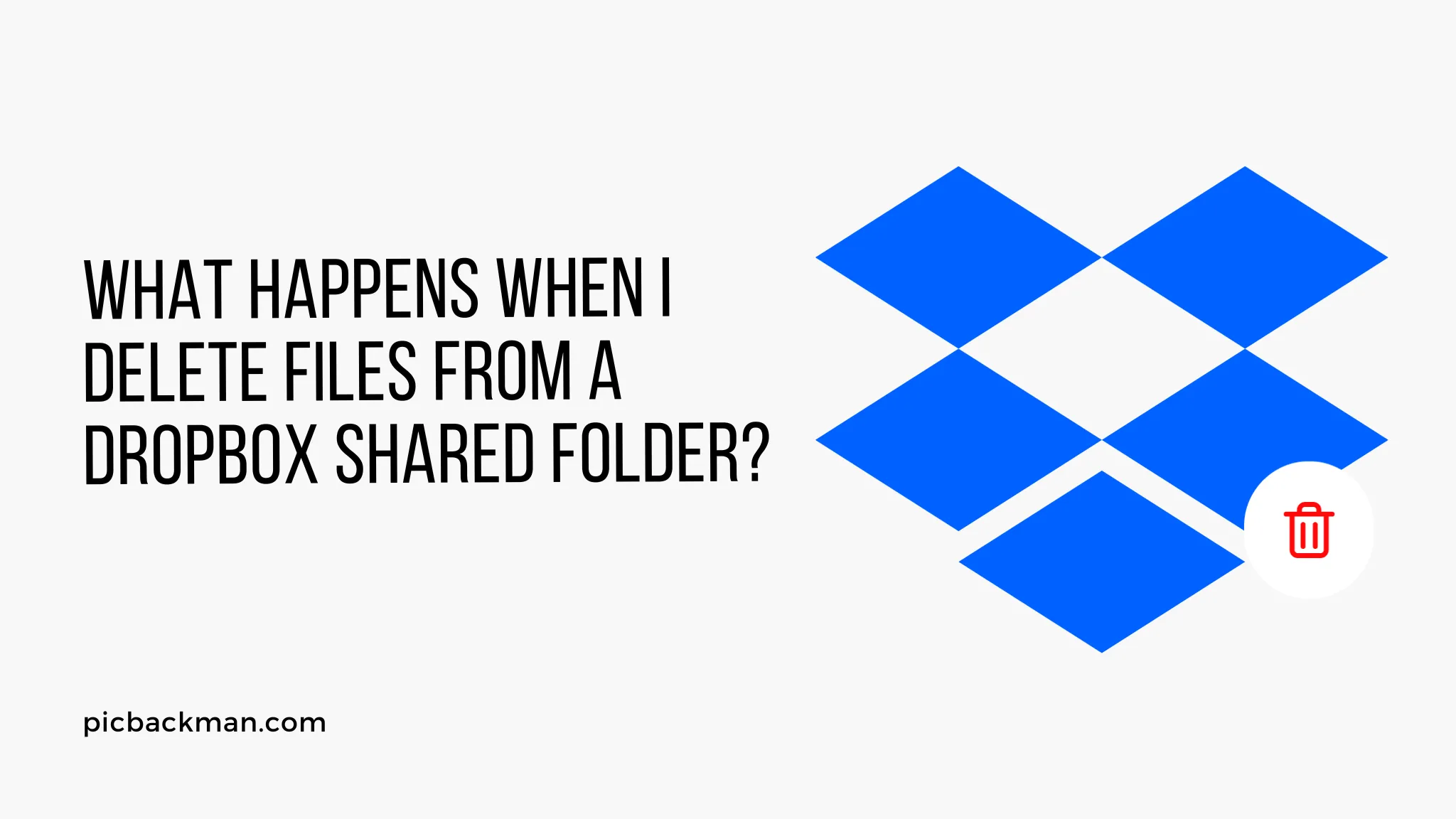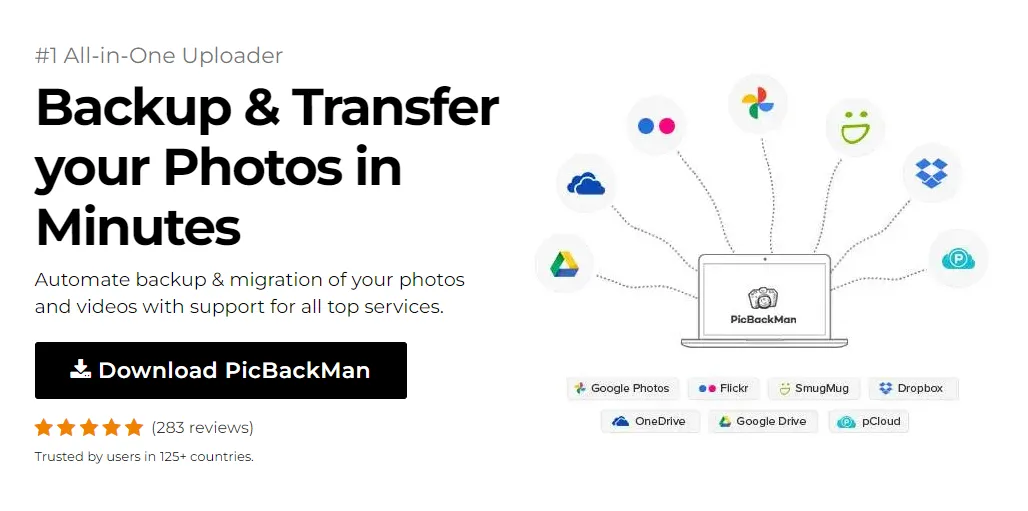
What happens when I Delete Files from a Dropbox Shared Folder?


Dropbox is a popular file hosting service that allows users to store, sync, share, and collaborate on files across devices. A key feature of Dropbox is the ability to create shared folders that multiple users can access. But what exactly happens when you delete files from a shared Dropbox folder? Here is a comprehensive look at what goes on behind the scenes.
Overview of Deleting Files from Shared Folders
When you delete a file from a shared Dropbox folder, it does not immediately disappear for other collaborators. The file goes into a "deleted" state for a period of time before being permanently removed. There are a few key factors that determine what happens next:
- Other users' sync status - Whether others have the latest sync of the folder on their devices.
- Deleted file retention period - Dropbox retains deleted files for 30 days by default before permanent removal.
- Restore capabilities - Deleted files can be restored during the retention period.
The outcome depends on the interplay between these factors, as we'll explore next.
What Happens When You Delete a File
When you delete a file from a shared folder, either manually or via the Dropbox website, here is the sequence of events:
- The file is marked as "deleted" in Dropbox's system. At this point, the file is not yet removed.
- On your synced devices, the file disappears from the folder instantly. It is marked as deleted locally.
- If others have already synced the folder, the file also disappears from their view of the folder immediately.
- If others have not synced the folder recently, the file remains visible on their devices until their next sync.
During this time, the file remains in Dropbox's cloud storage but is inaccessible through normal means. Other users may still be able to see the deleted file if they have an earlier local sync.
Deleted File Retention Period
Deleted files remain recoverable in Dropbox for 30 days from deletion by default. This is known as the "retention period." During this time, the files exist in Dropbox's cloud storage in a deleted state.
The retention period allows collaborators to restore deleted files if needed. However, after 30 days, deleted files are permanently purged from Dropbox's servers and cannot be recovered.
You can customize the retention period in the Dropbox admin console between 1 to 90 days or disable it entirely. With no retention period, files are permanently deleted almost instantly.
Preventing Permanent Removal During Retention
There are two ways deleted files can be "undeleted" during the retention period, preventing permanent removal:
- File restore - Users can restore deleted files via Dropbox's website, desktop app, or mobile app during the retention window. This pulls the file out of the deleted state.
- Version history - Files may have previous versions stored in history that can restore the deleted data.
If neither restore nor version history are used during the retention period, the file is permanently deleted after the retention period expires.
Impact on Storage Space
Deleted files still occupy storage space during the retention period. Only after permanent removal is the space freed up. As such, deleting large files or many files may not immediately reduce your overall storage utilization.
However, shared folder owners can reclaim space from deletions by removing deleted files from retention early. We'll cover how next.
Permanently Removing Deleted Files Early
As a shared folder owner, you can manually purge deleted files before the retention period expires. This permanently deletes the files and frees up the space.
Here are two ways to manually remove deleted files early:
-
Folder management - In the Dropbox web interface, navigate to the shared folder, click the ellipses menu > Removed files. Select files and click "Permanently delete".
-
Command line - Use the Dropbox CLI command
dropbox rmto permanently delete files without waiting for the retention period.
Manual purges allow you to reclaim space while still keeping some files in the retention period if needed. Selectively deleting files this way is useful for storage management.
Restoring Deleted Files
During the retention period, deleted files can be easily restored or "undeleted" by collaborators via:
-
Dropbox website - Deleted files appear in the "Deleted files" view for easy restore.
-
Desktop/mobile app - File versions allow restoring a deleted file.
-
CLI - Use
dropbox restoreto undelete removed files. -
API - Deleted files get a
.dropboxdeletedextension and can be restored programmatically.
Restoring brings the file back into the shared folder and syncs the change across all users. This allows collaboration to resume on the file.
Note that permissions may need to be re-granted if the file was deleted by a user without edit rights.
What If No One Has the File?
A special case arises when:
- User A deletes the last copy of a file from a shared folder.
- Before anyone else syncs the folder, retention period expires.
In this scenario, the file is permanently deleted from Dropbox's cloud storage since no user retained a copy. This makes the file unrecoverable even if other users sync the folder later.
So if you delete the last copy of a file before others sync, they will lose access to that file after the retention period. It cannot be restored.
Can Deleted Files be Viewed by Others?
With the right tools, it is possible for someone to view deleted files during the retention period, even without restore. Here is when deleted data is exposed:
-
Previous local sync - Users may have an earlier local copy from before deletion.
-
Exported metadata - File metadata can be exported, revealing deleted files.
-
Third-party tools - Programs like forensics tools can access retained files.
-
Compromised account - A hacked Dropbox account can potentially access deleted files.
So while deleted files cannot be viewed through Dropbox itself during retention, the data may still reside on users' devices or be extracted by advanced means.
Version History and Deletion
When a file is deleted, previous versions stored in Dropbox's version history are not deleted. They continue to be retained according to the version settings.
As such, previous file versions can be used to "roll back" and restore a deleted file before the retention period expires. Version history provides an additional safety net against permanent loss.
However, when the retention period ends, all versions of the deleted file are removed as well. At that point, the entire history is erased.
Deletion Across Synced Computers
When you delete a file from a shared folder on one computer, here is what happens on your other synced devices:
-
Desktop app - File is marked as deleted locally on sync.
-
Mobile app - File disappears once the mobile app syncs the change.
-
Web app - File disappears instantly since the web view stays in sync.
-
Linked computers - Deletion syncs across linked PCs via LAN sync.
So while the file is retained in the cloud during the retention period, it is marked deleted on all your local devices. Other collaborators' devices sync the deletion once they connect to Dropbox.
Deleting Folders
When you delete a folder from a shared Dropbox, the behavior is recursive:
-
The folder itself is marked as deleted.
-
All contents of the folder (subfolders and files) are also marked as deleted.
During retention, all folder contents appear in the deleted files view for restore. Permanent removal affects the folder plus all contents after the period expires.
So deleting a folder essentially deletes all enclosed files and subfolders in a cascading manner. It does not delete other top-level folders.
Trashing vs Permanent Delete
Most operating systems like Windows and macOS have a "trash" feature for files:
-
Trash - Files are moved to a trash folder but can be restored. Like Dropbox's retention.
-
Permanent delete - Completely removes files without recovery. Like after retention expires.
When you delete files within Dropbox desktop app folders, they follow the trash behavior rather than permanent removal. So deleted files remain recoverable from the trash.
But deleting directly on Dropbox's website permanently deletes files after the retention period. So be aware of this difference in behaviors.
Quick Tip to ensure your videos never go missing
Videos are precious memories and all of us never want to ever lose them to hard disk crashes or missing drives. PicBackMan is the easiest and simplest way to keep your videos safely backed up in one or more online accounts. Simply Download PicBackMan (it's free!), register your account, connect to your online store and tell PicBackMan where your videos are - PicBackMan does the rest, automatically. It bulk uploads all videos and keeps looking for new ones and uploads those too. You don't have to ever touch it.
Deletion Across Shared Folders
To recap, here is what happens to deletions across a shared folder:
-
Your view - File is instantly deleted on all your devices and the Dropbox website.
-
Others' views - File disappears when they sync the shared folder again.
-
Cloud retention - Deleted files stay recoverable for the retention period.
-
Permanent removal - Happens after retention period expires.
Deletions sync across all collaborators on a shared folder. But other shared folders are not affected.
Data Safety Precautions
When working with shared folders, implement these precautions to prevent accidental data loss from deletions:
-
Maintain backups - Back up important Dropbox data locally or to another cloud.
-
Monitor activity - Check the "Events" page for dangerous actions like mass delete.
-
Version history - Enable extensive history for files.
-
Alerts - Get notified of suspicious account activity.
-
Two-factor auth - Add 2FA to accounts for better security.
Scenarios of File Deletion
To put this knowledge into practice, here are some example scenarios of file deletion from shared Dropbox folders:
Scenario 1
- Alice deletes an important spreadsheet from a shared work folder.
- Bob had synced the folder to his laptop yesterday.
- Alice realizes her mistake and restores the file from the "Deleted files" view today (within retention period).
- Bob still has the deleted file in his local Dropbox folder.
- On next sync, the file reappears for Bob as Alice restored it.
In this case, no harm done as Alice quickly restored the file before the retention period expired. The file reverted to the synced state across users.
Scenario 2
- Eve deletes company data files from a shared folder.
- Nobody else has synced this folder recently.
- The retention period expires before anyone notices the deletion.
- Now the files are permanently deleted from Dropbox and unrecoverable.
This illustrates the risk of mass deletion without others having a synced local copy. No way to get the files back after expiration.
Scenario 3
- Frank deletes his only copy of an important design file from a shared folder.
- Nobody else had synced the folder.
- 30 days pass and the file is permanently deleted from cloud storage.
- Later, his colleague syncs the folder but cannot access the deleted design file anymore.
Again, permanent removal after retention expiration because no user retained a copy.
Avoiding Misunderstandings
To avoid misunderstandings when deleting files in shared folders:
-
Communicate - Let collaborators know when you delete files, especially important ones.
-
Double-check - Confirm the impact of deleting files from a shared folder beforehand.
-
Review activity - Check "Events" page to see deletes by other users.
Clear communication helps prevent undesirable data loss in collaborative workflows on Dropbox.
Dropbox File Deletion: Key Takeaways
In summary, here are the key points on deleting files from Dropbox shared folders:
-
Deleted files enter a 30-day retention period before permanent removal.
-
Others may still see deleted files until they sync folder.
-
Retained files still occupy storage space.
-
Folder owners can permanently delete files early to reclaim space.
-
Deleted files can be restored during retention via Dropbox interface.
-
Version history provides an additional backup against deletion.
-
Deleting folders cascades to all contents.
-
Use precautions like backup and 2FA to prevent data loss.
FAQs about Deletion from Shared Folders
Here are some frequently asked questions about deleting files in Dropbox shared folders:
Can I restore a file after it's been permanently deleted?
No, files are unrecoverable once the retention period expires. Your only option is to restore files before that.
Does deleting a folder also delete the contents?
Yes, deleting a folder in Dropbox deletes all the files and subfolders inside it recursively.
How do I find all my deleted files in Dropbox?
Use the "Deleted files" view in Dropbox's web interface. You can search and restore deleted files from there.
What happens if someone else restores my deleted file?
If another collaborator restores your deleted file, it will reappear in the shared folder on your synced devices once they are updated.
Can I configure my Dropbox account to skip the retention period?
Yes, account owners can set the retention period from 1-90 days or disable it completely in Dropbox's admin settings.
If I delete a file on Dropbox's website, does it also delete from my computer?
Files deleted on the Dropbox website will be marked as deleted on your synced desktop app folders too upon sync.
Conclusion
In closing, being aware of the nuances around deleting files from shared folders can help you avoid unwanted data loss when collaborating through Dropbox. Exercise caution when deleting files, communicate with collaborators, and leverage protective measures like versioning and backups. With an understanding of how deletion and retention works in Dropbox, you can better manage your critical files in the cloud.
Backup & Transfer your Photos in Minutes
Automate backup & migration of your photos & videos with support for all top services.
Trusted by users in 125+ countries.










